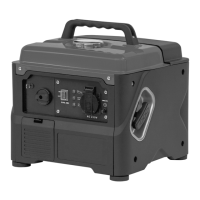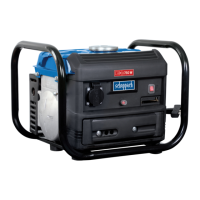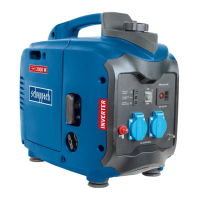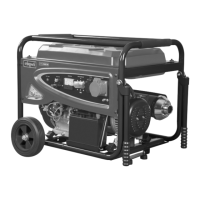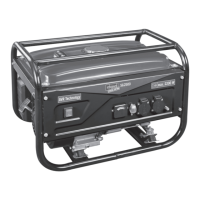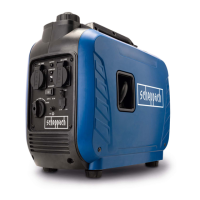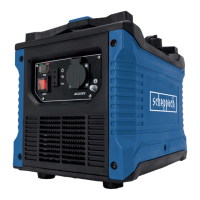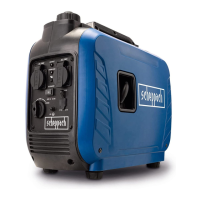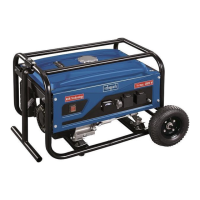www.scheppach.com
GB
|
35
9.4 Overload indicator (14)
Overload protection is active at too high a power take-o - Turns o 230 V sockets (9).
Turn o the unit (see section 9.2).
Connected devices from separate generator. The unit (see section 9.1).
9.5 Operating display (15)
Power indicator active - when the engine is running.
9.6 Energy saving switch (9)
Reduce fuel consumption / idle - Energy saving switch “ON“ position.
9.7. Electrical safety
Electrical cables and attached devices must be defect free.
Never connect the generator to the mains (power point).
Keep the cables as short as possible.
9.8 Connecting to earth (g. 2)
The housing can be connected to earth to discharge static electricity. To do this, connect one end of
a cable to the earthing connection (7) on the generator and the other end to an external ground (z.
B. for example to an earthing rod).
9.9 12 V Connection
At the 12 V DC connection (11), a 12 V battery can be charged using the included cable.
10. Maintenance
m WARNING
• Carry out maintenance work only with the stopped engine.
• Pull the spark plug cap from the spark plug
Oil change
Change the engine oil after 25 operating hours, then after 50 hours or every three months.
The engine oil change should take place when the engine is at operating temperature.
• When changing the oil, have a non-leaking container available.
• Remove the engine cover (Fig. 5 Pos. 5)
• Open the oil ller plug (Fig. 6 Pos. A)
• Drain the old oil into a suitable container by tilting the generator.
• Fill the engine oil to the upper mark of the dipstick using the oil-lling container.
• Dispose of the oil in accordance with stipulations. Take the old oil to a collection point. Most petrol
stations, garages or recycling centres take back old oil free of charge.
Air lter
Frequently cleaning of the air lter prevents carburetor malfunction.
Clean the air lter and change air lter inserts
• The air lter should be cleaned every 30 hours.
• Remove the engine cover (Fig. 5 Pos. 5)
• Remove the air lter cover (Fig. 8 Pos. B)
• Remove the air lter (Fig. 8 Pos. C)
